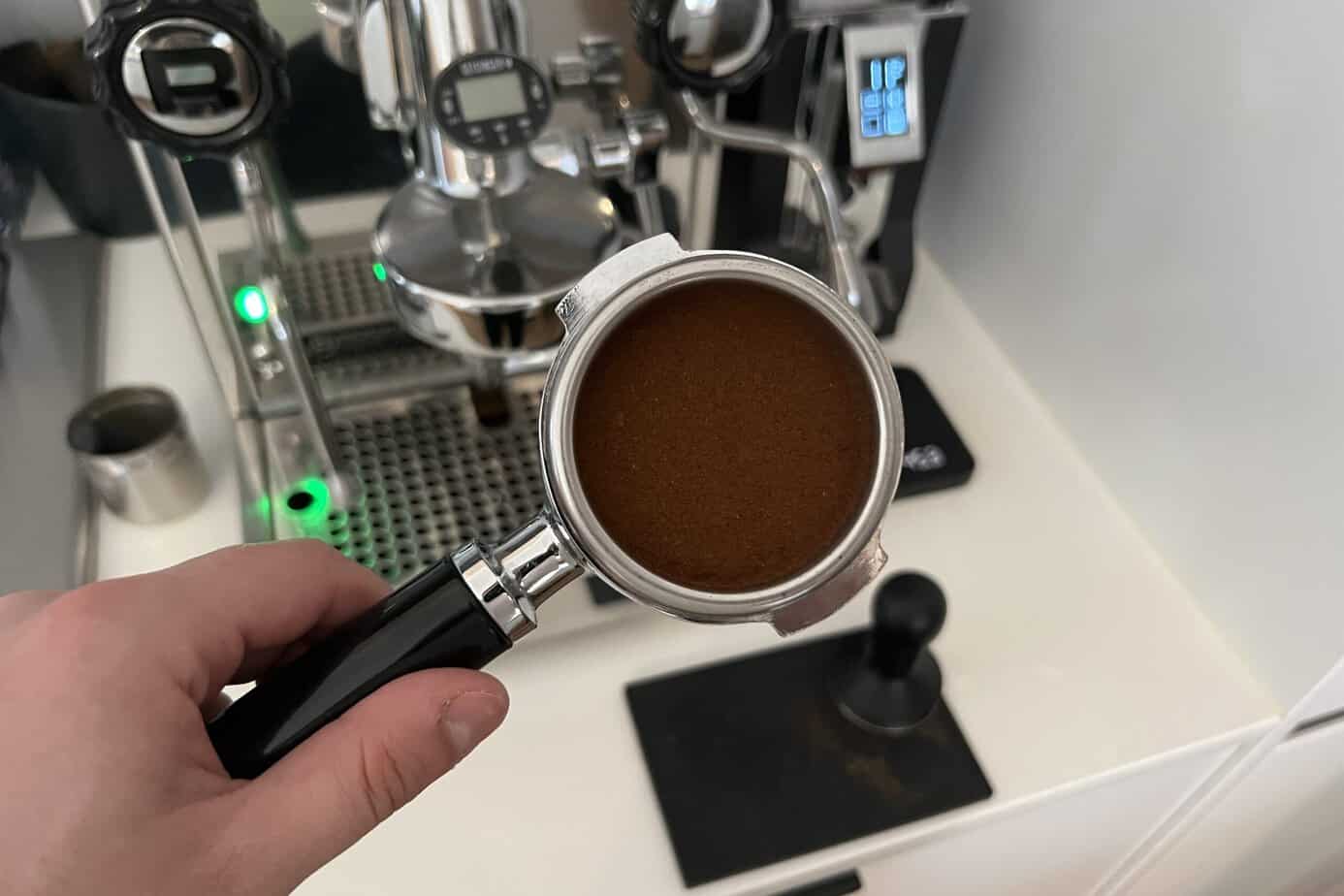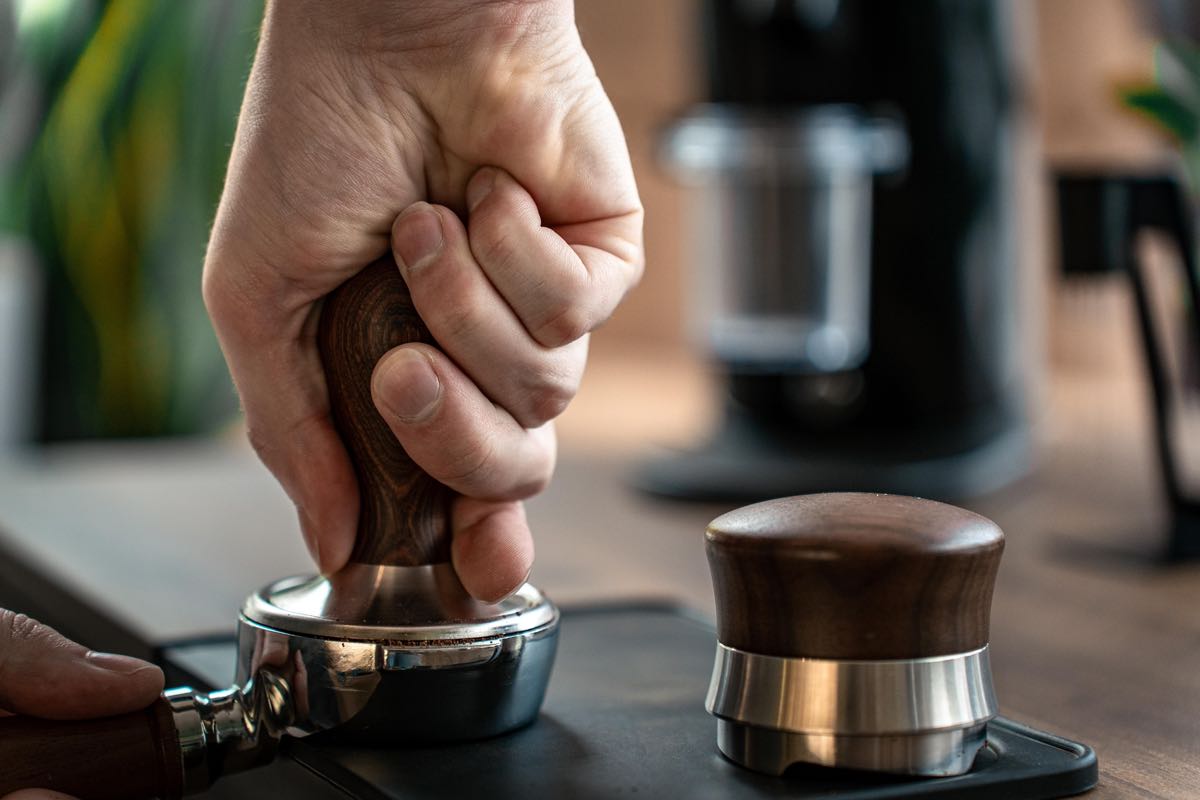As a home barista, my journey to mastering espresso began with a simple but daunting task: tamping. I remember my first attempt at making espresso; I was excited yet nervous, standing in my kitchen with a freshly ground bag of coffee beans. After brewing my first shot, I tasted a watery, sour mess that left me frustrated. Little did I know that my tamping technique was the missing link to unlocking the rich, robust flavors I craved. Now, I’ve learned that perfecting my tamp is just as critical as selecting the right beans or adjusting my grind size. Let’s delve into the nuances of tamping and how to elevate your espresso game at home. Learn everything about this innovative coffee machine in our DeLonghi Eletta Explore Espresso Machine with Cold Brew review
Why Tamping Matters
Tamping plays a vital role in the espresso-making process. It’s not merely about pressing down on coffee grounds; it’s about creating an environment that promotes even extraction. When you tamp the coffee grounds, you compress them into a uniform bed, which helps prevent air pockets and reduces the likelihood of channeling. Channeling occurs when water finds its way through weak spots in the coffee bed, resulting in uneven extraction. The result? A shot that is either too weak or inconsistently flavored. Dive into the features and performance in our DeLonghi Dinamica Automatic Coffee & Espresso Machine review
An effective tamp allows water to flow uniformly through the coffee, extracting a rich array of flavors. Without proper tamping, water can rush through the grounds too quickly, leading to under-extraction and a disappointing shot that tastes thin and sour. Explore the versatility of this model in our DeLonghi Magnifica Evo Espresso Machine with Frother review

How Much Pressure Is Just Right?
The age-old adage for tamping is to apply around 30 pounds (13.6 kg) of pressure. However, for those of us brewing at home, it’s more beneficial to focus on developing a steady, consistent technique rather than fixating on an exact number. Discover the benefits and features of this machine in our DeLonghi Magnifica Evo review
What truly matters is that you press firmly enough to ensure the grounds are compact and stable under the tamper. Once you achieve a compact coffee bed, any additional pressure can lead to over-extraction, producing a bitter shot. Instead, concentrate on keeping your tamper level and applying consistent force. When the grounds feel firm and no longer shift beneath your tamper, you know you’ve applied enough pressure to proceed to brewing. Find out why this model stands out in our DeLonghi Magnifica S review
Key Steps for Consistent Tamping
To achieve consistent tamping and pull excellent espresso shots at home, follow these straightforward steps:
1. Distribute the Coffee Grounds Evenly
Before tamping, ensure the coffee grounds are evenly distributed in the portafilter. Unevenly distributed grounds can lead to uneven tamping and channeling. Utilize a coffee distribution tool or gently tap the portafilter on a stable surface to level the grounds.
2. Grip the Tamper Correctly
Hold the tamper with a straight wrist and maintain your elbow at a 90-degree angle. This position ensures even pressure distribution and minimizes strain on your arm. Use three fingers to grip the handle, while your thumb and index finger guide it, ensuring it remains level throughout the tamping process.
3. Apply Steady Pressure
Press down evenly across the coffee bed until you feel the grounds stop shifting—this is referred to as “tamping to resistance.” Once the coffee feels firm under the tamper, stop. Excessive pressure will not enhance your shot and could lead to undesirable bitterness.
4. Don’t Stress Over the Exact Pressure
While 30 pounds of pressure is a common guideline, your primary goal is to achieve a firm and consistent tamp. As long as your pressure remains steady and even, you should be well on your way to pulling great espresso shots.
5. Use a Stable Surface
Utilizing a stable tamping surface, like a tamping mat, can help maintain control and protect your countertop. A stable surface also ensures a level tamp, reducing the risk of unintentional unevenness.
Common Tamping Mistakes to Avoid
As you refine your tamping technique, be mindful of these common mistakes that can negatively impact your espresso quality:
- Uneven Tamping: If the tamper is not level, the coffee bed will be uneven, leading to channeling and inconsistent extraction. Always ensure your tamper is perfectly flat before applying pressure.
- Tamping Too Hard or Too Soft: Excessive tamping pressure can result in over-extraction and a bitter espresso, while too little pressure can produce weak, under-extracted shots. Strive to find a balance where the grounds are adequately compressed but not overly packed.
- Skipping Ground Distribution: Neglecting to distribute the grounds evenly before tamping can lead to uneven extraction. Always take the time to level the coffee grounds.
Enhance Your Technique with Tools
Several tools are available to help improve your tamping technique and achieve more consistent espresso results:
- Distribution Tools: Items like coffee levelers or Weiss Distribution Technique (WDT) devices can help you distribute coffee grounds evenly before tamping, minimizing clumping and promoting uniform extraction.
- Pressure-Controlled Tampers: Tampers equipped with built-in pressure sensors can assist you in applying a consistent amount of force, ensuring precision with each shot. These tools are especially beneficial for beginners seeking to refine their technique.

Conclusion: Practice Makes Perfect
In the world of espresso, consistency is paramount. While tamping pressure is an important factor, developing a reliable routine is even more crucial. Focus on evenly distributing the coffee grounds, applying steady and level pressure, and stopping once you feel resistance.
As you continue to practice, you’ll gain an instinct for the right tamping technique, resulting in consistently better espresso shots at home. So, rather than obsessing over achieving the “perfect” tamping pressure, embrace the learning process. With time and dedication, you’ll be crafting delicious, consistent espresso shots that rival your favorite café.
FAQ
Q: What is the ideal tamping pressure for espresso?
A: The conventional guideline is around 30 pounds (13.6 kg) of pressure. However, it’s more important to develop a consistent technique rather than focus solely on a specific number.
Q: How can I avoid channeling during extraction?
A: To prevent channeling, ensure that your coffee grounds are evenly distributed in the portafilter and that you apply a level tamping pressure.
Q: What tools can help improve my tamping technique?
A: Distribution tools like coffee levelers and pressure-controlled tampers can enhance your technique by promoting even ground distribution and consistent pressure application.
Q: How can I tell if I’ve tamped correctly?
A: You’ll know you’ve tamped correctly when the coffee bed feels firm and does not shift under the tamper. Stop applying pressure once you feel resistance.
Q: Is tamping really that important?
A: Yes, tamping is crucial for ensuring even extraction during the brewing process. Proper tamping can significantly improve the flavor and quality of your espresso shots.
